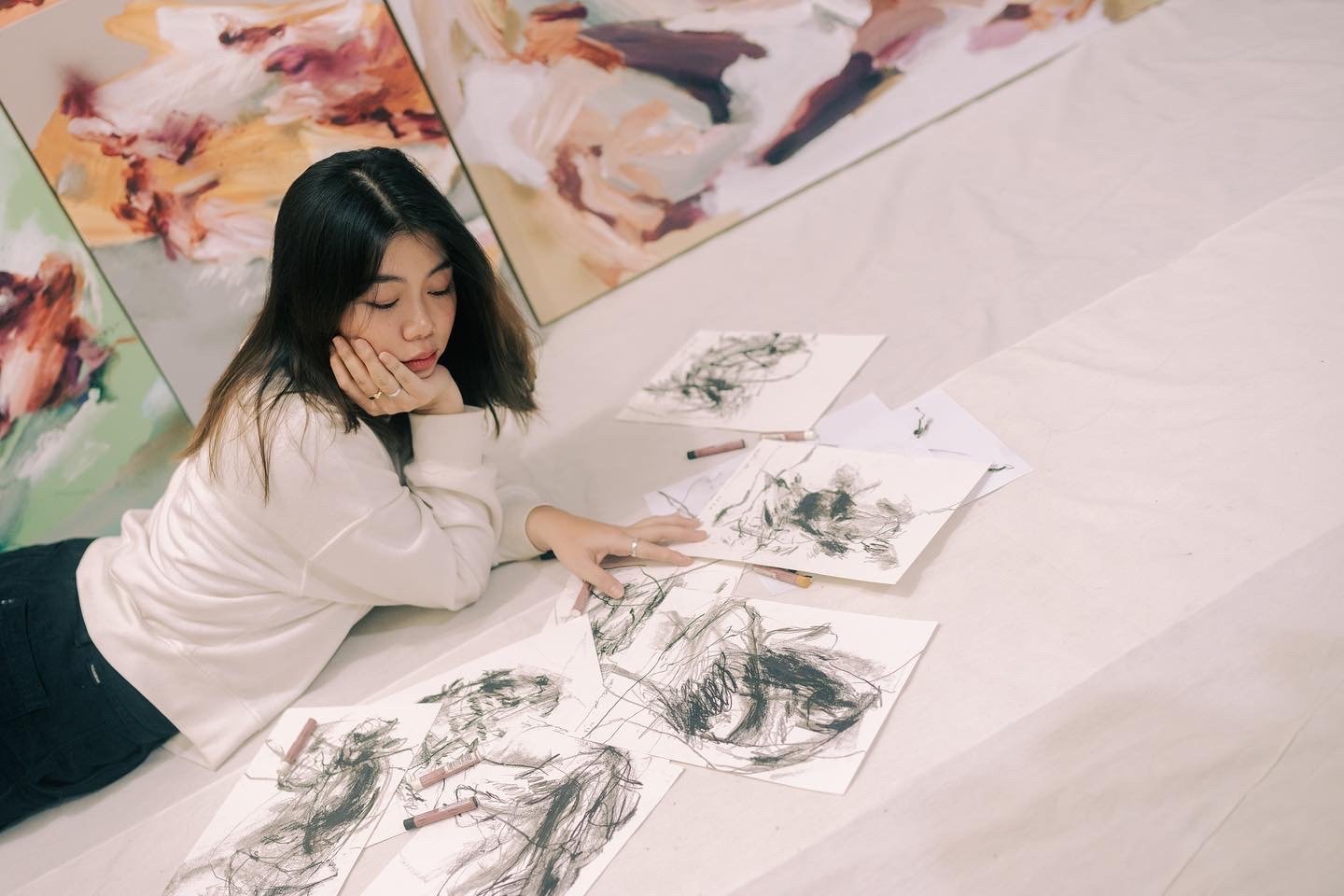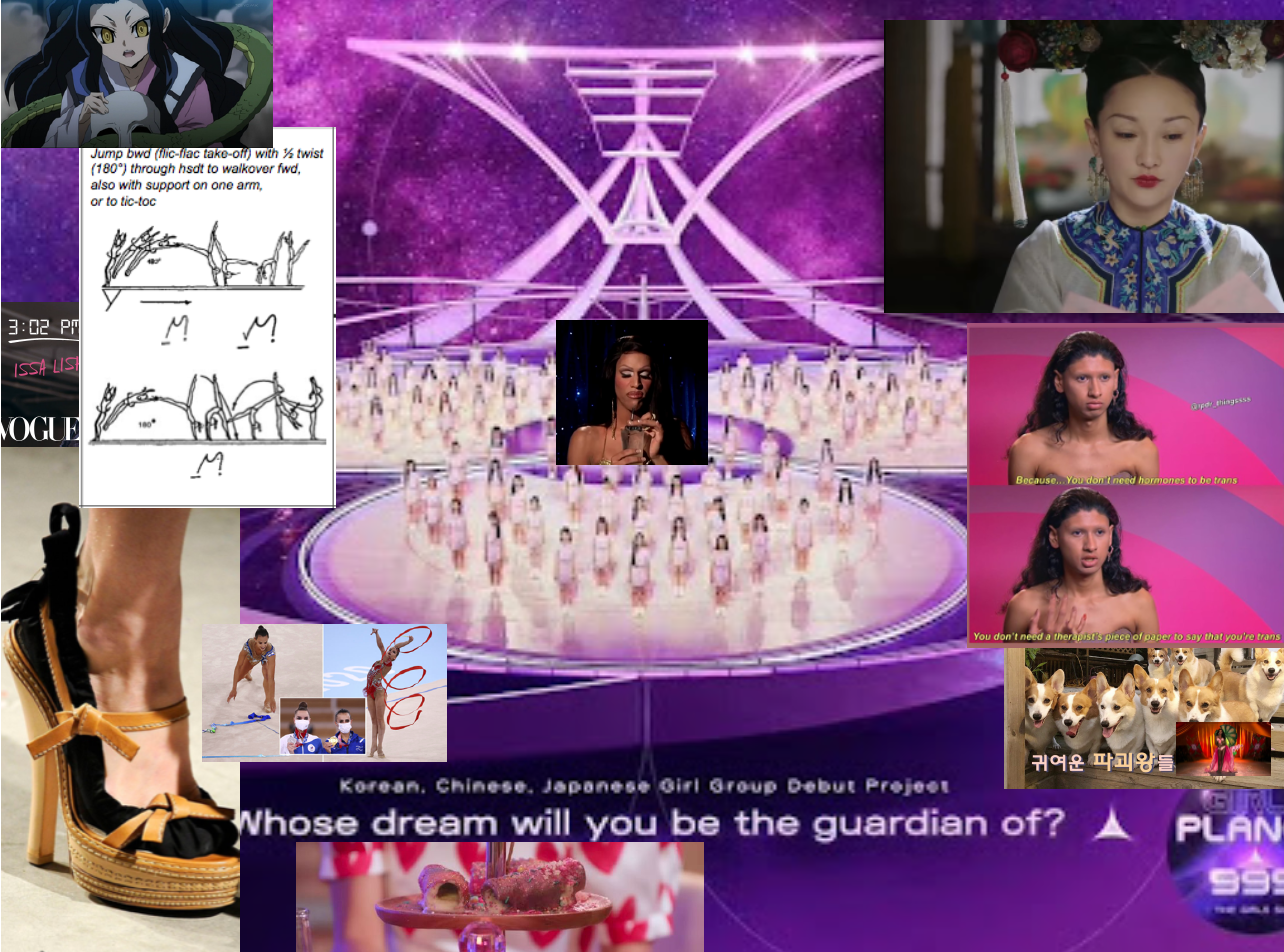Fresh Faces: Mutiara Riswari
The relationship between human and nature
By Nabila Giovanna W
A&M's Fresh Faces is where we profile an emerging artist from the region every month and speak to them about how they kick-started their career, how they continue to sustain their practice and what drives them as artists. Read our profile on Mutiara Riswari here.
Mutiara Riswari.
Could you share how you first started your artistic journey?
Art is one way to describe how I feel. I have been doing it since my parents separated when I was 5 years old, and it has become a part of my therapy. I decided to pursue art seriously in 2013 by entering Yogyakarta Fine Arts High School (Sekolah Menengah Seni Rupa Yogyakarta). During my time there, I started to make exhibitions and submit my works for open calls. In 2016, I continued my studies at Indonesian Institute of the Arts Yogyakarta (Institut Seni Indonesia/ISI Yogyakarta). Afterwards, for three years, I went on a hiatus, and only became active again in the art scene from 2019 onwards.
Mutiara Riswari, ‘Purple Roses I & II’, 2023, fabric, acrylic, spray paint and pastel on canvas, 80 x 60cm. Image courtesy of the artist.
Could you share how you’ve maintained your practice after graduation? Are there any challenges that you faced? What are the important factors that spurred you on?
I decided to take leave from ISI Yogyakarta in 2018 because my dad was diagnosed with cancer. From there, I began to face realities that were beyond my plans. I was once in a phase where I left the art world behind, but ultimately I chose to pursue art again because I did not want to lose myself. When I create works, I am exploring my personal potential, especially how to remain realistic without losing my identity, and continuing to believe in what I am doing.
“When I create works, I am exploring my personal potential, especially how to remain realistic without losing my identity, and continuing to believe in what I am doing.”
Could you give us a glimpse of what your day is like as an artist? What kind of routine do you follow to keep your creativity going?
My routine is the same as others. I live life by taking care of what I already have. I socialise, study, visit exhibitions, create projects and more. For me, these are common activities that make up my practice, and there are moments when life goes up and down, or appear in different colours and rhythms. No matter what goes on, I spare some of my productive time to express what I think and feel through my works.
Behind the scene preparation for ‘Critical Voyage’ (2021) and ‘Eyes Wide Open’ (2022) solo exhibition. Image courtesy of the artist.
Your first solo show abroad was ‘Eyes Wide Open’ in 2022 at White Space Art Asia, Singapore. What was the process like and were there any challenges in preparing for it?
The preparation for my solo exhibition in Singapore was quite simple, because we displayed several of my old works. It was quite a straightforward process, from preparing the context to the curatorial aspects. One of the challenges was working remotely. Due to the distance, there was some miscommunication, but I am grateful everything went smoothly in the end.
Your artworks build upon the Javanese concept of jagat alit (microcosmos), where humans are considered as an interconnected part of the universe. What made you decide to explore this concept further?
The concept of jagat alit began to emerge during the COVID-19 pandemic. The limitation of doing activities outdoors led me to moments of contemplation, especially on how to maximise my time indoors. During the two years we stayed at home, I began to realise that we were also giving time for nature to rest. At that point, I felt nature and human beings were healing and connecting with each other at the same time. Over time, my works also began to link psychology with natural conditions, and I decided jagat alit to be a suitable theme for my works.
Mutiara Riswari, ‘Priority’, 2019, acrylic, pastel, charcoal, spray paint on canvas, 150 x 120cm. Image courtesy of the artist.
In 2019, you were the finalist for the Emerging Artist category in UOB Painting of The Year Awards. Could you tell us about the artwork that earned you a spot as a finalist?
For the UOB Painting of the Year 2019 Awards, I submitted a work titled 'Priority' (2019). It captured the problems I was facing at the time, and the process it took to solve it, especially doing so one step at a time.
Mutiara Riswari in her studio.
You work experiments with materials from acrylic to spray paint to fabric. Is there one you prefer to another, or what more would you like to try?
I am comfortable with acrylic, spray paint and pastel as my painting materials, but I do not rule out the possibility to branch out into other media, such as fibre or resin. I will continue to experiment with materials that I use in the future.
Mutiara Riswari, ‘Purity’, 2022, acrylic, spray paint and pastel on canvas, 200 x 160cm. Image courtesy of the artist.
Who has been a mentor or an important artistic influence? And why?
I once studied at the studios of Nunung WS and Dedy Sufriadi, and in my creative process I am inspired by Christine Ay Tjoe and Cy Twombly. I like processes that are intuitively strong, for they help me to relate to my own artistic and aesthetic values.
What was one important piece of advice you were given?
To be consistent and responsible with anything that I have started, while also maintaining honesty at every step. These are things that I still hold to this day.
Could you share your favourite art space or gallery in Indonesia? Why are you drawn to that space and what does it offer to you/your practice?
I enjoy the work of Gajah Gallery, Langgeng Art Foundation and Artsphere Gallery. And I will collaborate with Art Agenda and Sangkring Art Space soon. For me, a good gallery supports artists in the development of their artworks.
What are your hopes for Indonesia's local art scene, and regionally as well?
My hope for Indonesia's art scene is to have greater awareness and appreciation towards artworks from the audience, fellow artists, galleries, art connoisseurs, and more, so that the existing art ecosystem can be developed further. Meanwhile, in terms of workmanship, I hope local artists will continually develop their practices in fresh ways.
Could you share your upcoming projects and goals that you wish to achieve in the future?
I have exhibitions to come in Yogyakarta, Bali, Singapore and Japan. I plan to work in adaptation to changing times, and look forward to holding another solo exhibition before long.
This interview has been edited.



















